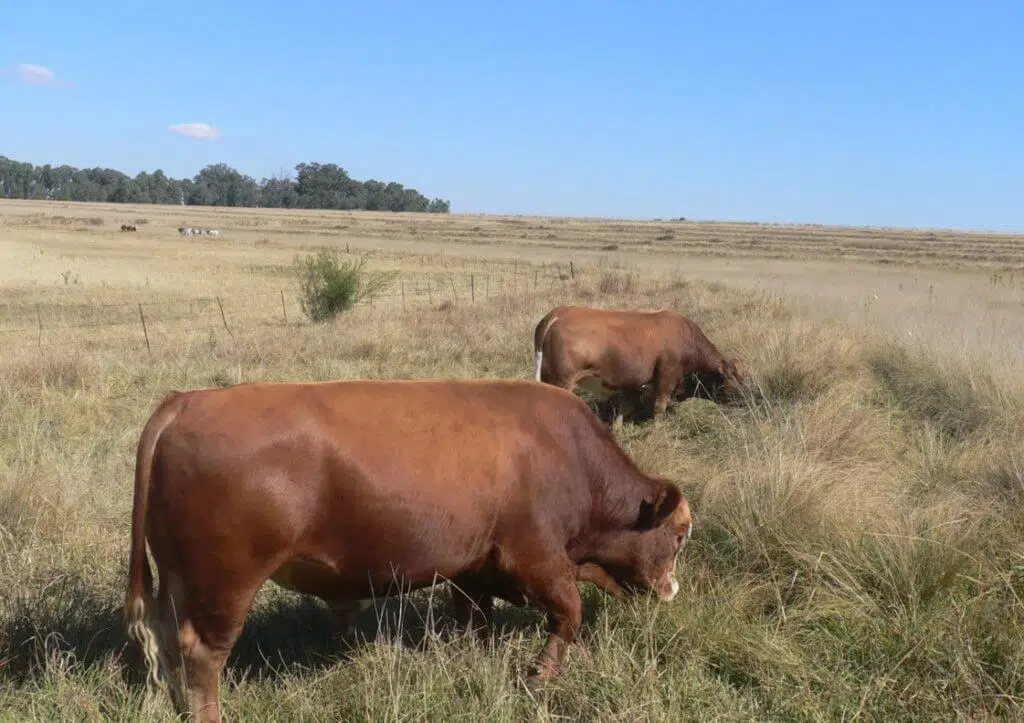Hybrid vigour, synonymous to heterosis, has always been a popular subject at a braai, but someone forgot to put wood on the fire. Without hot coals, no one will braai.
Hybrid vigour, known as cross-breeding, is the process whereby certain characteristics of different pure-bred cattle are combined to produce an animal that can attain higher levels of production than either of the breeds it originated from. Cross-bred animals resultantly possess a performance advantage over the average of their pure-bred parents.
In the case of the Braford, breeders had identified the potential of a composition between the Brahman and Hereford cattle breeds. The greatest advantage of hybrid vigour (cross-breeding) is evident in the survivability and fertility of the offspring, which can make an enormous economic difference. Characteristics of the sire and dam must, however, complement one other.
The female animals in a herd should possess the following characteristics: fertility, calving ease, milk production, and maternal characteristics. On the other side of the scale, growth performance, carcass characteristics, and meat quality traits are important for bulls.
The question, therefore, exists: how do we make sure that the Braford cattle we own today still outperform their predecessors? Here are a few tips to make the most of hybrid vigour.
Choose an adaptable animal
Animals on veld are exposed to harsh environmental conditions, including parasites, feed, diseases, and adverse weather conditions. These factors are difficult to control; therefore, we need to retain animals in the herd that perform best in a specific environment.
Ticks are a common problem that will not disappear. It may be economically beneficial to select animals in a herd that exhibit resistance against tick infestation, instead of making extensive use of pesticides. New research indicates that Braford cattle with a reduced tick load on the one side and between both hind legs, potentially exhibit elevated genetic resistance against ticks. It is, therefore, wise to select for these cattle in your herd to ensure improved levels of resistance in future generations.
An animal that is better adapted to hot and cold conditions is the one that will perform better. The animals’ skin colour, thickness, and type will influence its ability to perform. During a study conducted in the south-eastern Free State, Braford heifers exhibited the best body condition score, which demonstrated that they were well adapted to that specific area. In the Braford breed, a strong genetic relationship exists between the skin colour of an animal at weaning and the colour of the skin at one year of age. Farmers can select for adaptability earlier in their future breeding herd.
Maternal characteristics
The greatest benefit of a cross-bred herd is determined by its female animals. Heifers and cows that do not fail to conceive repeatedly during the breeding season, and hence calve earlier, are surely an asset to any farmer. Maintaining these female animals in the herd means that more calves will be produced per animal lifetime and they will not be unnecessarily fed.
Therefore, make use of cross-breeding practices to increase fertility in your herd and cull female animals that fail to or take too long to conceive. How do we identify them? Cows or heifers that exhibit a very good body condition after the calving season, should be examined. Udders and teats that are covered with hair and/or a fatty brisket may be indicative of a female that did not calve during the calving season.
Dams that wean heavier calves produce enough milk; another advantage of a cross-bred animal. Weigh animals at birth and then again at weaning. This will ensure that informed decisions are made regarding the breeding herd. Select heifers with improved weaning weights, but remember to take the date of birth into account. A calf born three months later, with a slightly lower body weight than one that is three months older, is certainly the superior animal!
Female animals that are repeatedly assisted during calving should also be removed from a herd. The possibility exists that the offspring of such an animal will also experience calving difficulty, as there is a genetic influence on the trait that can be transferred.
Production and behavioural characteristics
Animals with heavier birth weights, that experience no calving problems and have heavier weaning weights, have the ability to grow better. This is economically advantageous, owing to an increase in meat production per hectare, regardless of whether the animals are sold to feedlots or are finished off on the farm to be slaughtered later.
Temperament is another characteristic that should not go unnoticed. It is an animal-specific and not breed-specific trait, and it is hereditary. Context is also important. A cow with a calf should be able to protect the calf against danger. However, an animal that charges you every time you move to the handling facilities is a problem. Animals with a bad temperament can experience high levels of stress, which can lead to reduced levels of production.
The Braford presents the opportunity to utilise all the positive attributes to the maximum. Just like us, no animal is perfect. Therefore, select the best combination of the above-mentioned characteristics to make informed decisions pertaining to your herd and implement cross-breeding strategies to ensure increased levels of production.
Remember… to measure is to know!
Ruminant researcher











Very interesting article, Ashley! Thank you.